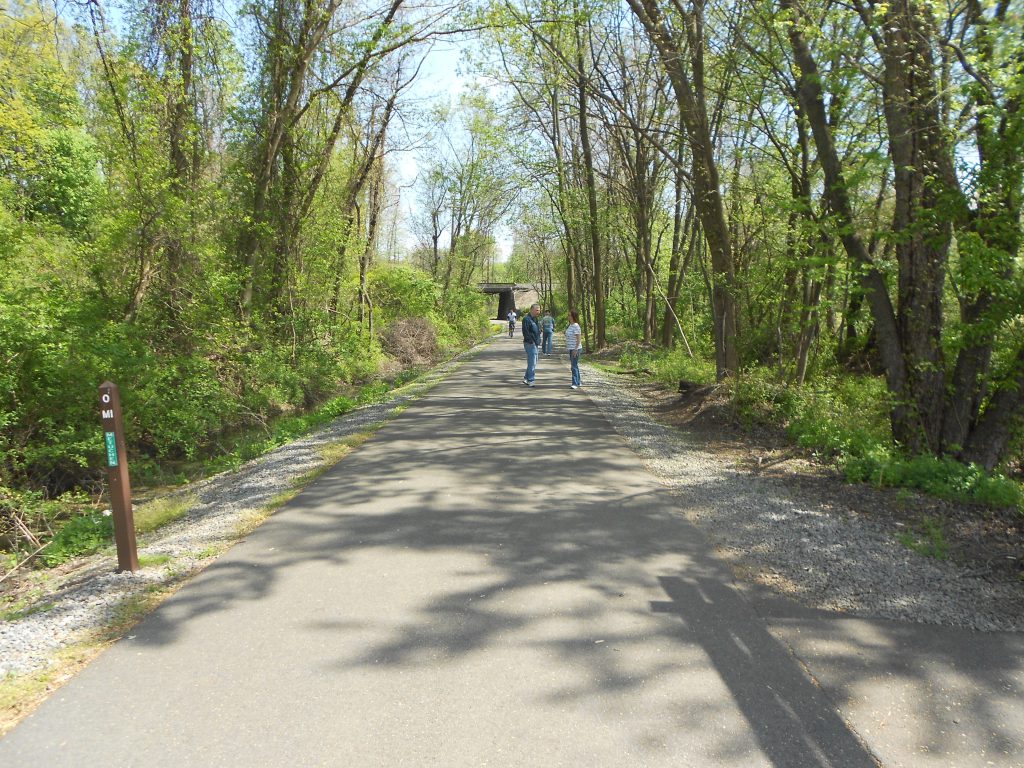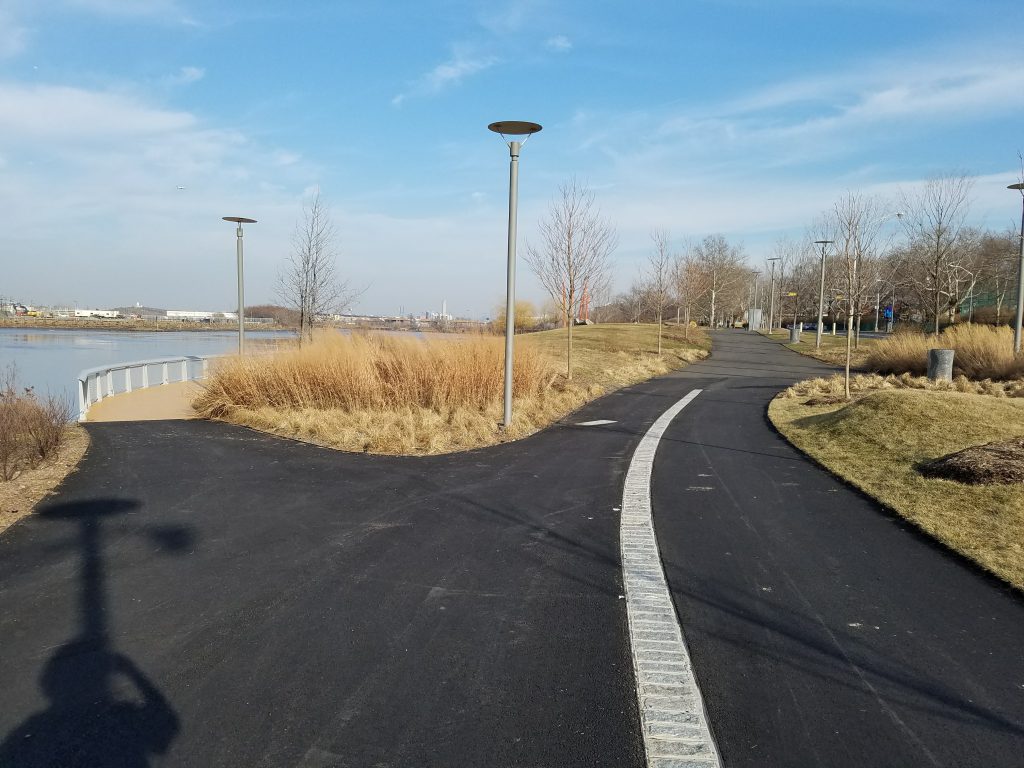The Federal Highway Administration (FHWA) released a Notice of Funding Opportunity (NOFO) announcing up to $44.5 million in new funding for the Active Transportation Infrastructure Investment Program (ATIIP). These funds are available for the planning, design, and construction of active transportation networks across the United States. This funding can be used to build walking and bicycling trails, shared-use paths, bike lanes, and sidewalks that connect destinations within communities and/or connect communities to each other. Applications are due to via grants.gov no later than Monday, June 17, 2024.
The FHWA has identified the ATIIP as a component of the National Roadway Safety Strategy because of the potential of funded projects to improve safety. By providing new connections and enhancements to active transportation facilities in communities, projects can reduce the risk of fatalities and serious injuries for all road users, including pedestrians, bicyclists, micromobility and transit users, and motorists.
Additionally, the FHWA seeks to use the ATIIP to fund active transportation projects that reduce greenhouse gas emissions. In the United States, over half of all trips are under 10 miles, and most of these take place in private vehicles. By increasing access between communities for people walking and biking, projects funded by this program can provide safe, healthy, non-polluting alternatives to driving for many trips.
The FHWA also hopes to fund projects that reduce disparities and increase equitable access to transportation. In lower-income areas, not only are people less likely to have access to a car, but they are also more likely to live near more dangerous roadways. As a result, lower-income communities are often considered overburdened with higher rates of traffic fatalities, serious injuries, asthma, and other diseases. They are also less likely to have convenient access to transit, health care facilities, educational institutions, and job opportunities. By improving the safety of active transportation facilities and by providing off-road routes for pedestrians and bicyclists, the ATIIP has the potential to improve equity, both in transportation and health outcomes.
What types of grants are available?
There are two types of funding available: planning and design grants and construction grants. At least 60 percent of all funds awarded must go towards construction.
Planning and Design Grants
Planning and design grants may be used to fund planning studies, public engagement and outreach activities, concept development, and preliminary engineering tied to projects in an approved plan. Projects funded with these grants must have total planning and design
costs of at least $100,000, and the FHWA expects some of these projects to be as large as $2 million.
For example, local and county governments can apply for planning and design grants to develop a municipal- or county-wide trails plan and/or a bicycle network plan. Network plans and trails plans can operate in conjunction with each other, linking local destinations within a community and with regional trails that connect communities with each other.

Construction Grants
Construction projects funded with these grants must have a total project cost of at least $15 million. These grants can fund many activities, including, but not limited to:
- Property acquisition
- Site preparation, demolition, or development
- Payment of bonds or notes
- Fees related to the execution and financing of the project
- Studies, surveys, plans, permits, insurance, interest, taxes, etc. for the project
- Construction, rehabilitation, and reconstruction
- Land improvements
- Contractor fees
- Training and education for the safety of those who will use the facilities once they are completed
How much funding can be awarded in an ATIIP grant?
The amount awarded for an ATIIP-funded project depends on multiple factors. Most projects require a local match of at least 20 percent, but projects serving communities with a poverty rate over 40 percent may not be required to provide any local match.
Projects may also include other sources of funding. Construction grants, which must have a total cost of at least $15 million, are eligible for an ATIIP grant in an amount anywhere between $7.5 million and $12 million. Projects serving communities with a poverty rate over 40 percent may receive an award up to $15 million. In other words, if a project cost goes above $15 million, the additional costs will likely not be funded by the ATIIP grant.

Who can apply for an ATIIP grant?
Many types of government organizations are eligible for the Active Transportation Infrastructure Investment Program. These include:
- Local and county governments
- Metropolitan planning organizations (MPOs) and regional planning organizations (RPOs)
- Multi-county special districts
- States
- Multistate groups of governments
- Indian Tribes
What can the ATIIP fund?
The Active Transportation Infrastructure Investment program has funds set aside to fund the planning, design, and construction of active transportation facilities. Specifically, the money can be used to build intra-community active transportation networks as well as regional “spines” that connect communities with each other. The federal government will award up to $44.5 million in funding for the ATIIP this year, which will be distributed between planning efforts and the construction of active transportation networks and spines.
Active Transportation Networks
The Notice of Funding Opportunity specifies that a major portion of the construction grants awarded must fund the development of active transportation networks. These networks connect destinations within a community or region, such as schools, housing, workplaces, commercial areas, medical facilities, community centers, and recreational areas. Facilities can include sidewalks, bikeways, shared-use paths, and pedestrian and bicycle trails.
Active Transportation Spines
Another major portion of the grant funds must go toward the construction of active transportation spines. Spines connect two or more communities, regions, or states. Like active transportation networks, these facilities can include sidewalks, bikeways, shared-use paths, and trails. Whereas an active transportation network links destinations within a community, an active transportation spine links communities to each other.
To learn more…
For more information and webinars on how to apply for an ATIIP grant, visit www.fhwa.dot.gov/environment/bicycle_pedestrian/atiip
FHWA has hosted two information session webinars on the Active Transportation Infrastructure Investment Program (ATIIP). The webinars provide a program overview, explain the application evaluation process, describe how to apply through grants.gov, and share related informational resources.
- Watch the recording of the April 9, 2024, ATIIP Discretionary Grant NOFO Information Session. Passcode: 7#rG=NzK
- Watch the recording of the April 10, 2024, ATIIP Discretionary Grant NOFO Information Session for Tribes. Passcode: &Ht4K^4&
- View slides from the information sessions.
A third webinar will be held on Monday, April 22, 2024, at 3:00 p.m. Eastern Daylight Time. Register for the webinar here.
Updated April 15, 2024.
